Cleaning your home effectively does not require a cabinet full of harsh chemicals. Many busy homeowners and apartment dwellers seek simpler, healthier ways to maintain a comfortable living space. You deserve practical, budget-conscious solutions that integrate easily into your daily life. This guide empowers you to tackle common household grime using readily available, natural ingredients. You will discover how simple pantry staples transform into powerful cleaners, offering a sustainable and effective approach to a sparkling home. We focus on realistic systems that maintain order, ensuring your home stays fresh without complicated routines or expensive specialty products. Embrace the power of DIY solutions and create a cleaner, healthier environment for yourself and your family.

The Case for Natural Cleaning: Why It Matters
Switching to natural cleaning products offers numerous benefits for your home, your health, and your wallet. Traditional cleaning supplies often contain volatile organic compounds (VOCs) and other chemicals that contribute to indoor air pollution. The U.S. Environmental Protection Agency reports that indoor air can be two to five times more polluted than outdoor air, partly due to common household products. By choosing `eco-friendly cleaners`, you significantly reduce your exposure to these substances, creating a healthier living environment.
Beyond health, natural cleaning provides tangible environmental advantages. Many conventional cleaners rely on petroleum-based ingredients, which contribute to resource depletion and pollution. Their manufacturing processes frequently generate harmful byproducts, and the chemicals they contain can pollute waterways after flushing down drains. Opting for biodegradable, plant-derived ingredients minimizes this ecological footprint. You actively support a healthier planet with each natural cleaning choice you make.
From a practical standpoint, natural cleaning saves you money. The core ingredients, such as baking soda, white vinegar, and lemon juice, are inexpensive and readily available at any grocery store. You already have many of these items in your pantry, eliminating the need for separate purchases of specialized cleaners for every surface. This `natural cleaning products guide` shows you how to leverage these affordable staples, stretching your budget further while keeping your home spotless.

Your Natural Cleaning Arsenal: Essential Ingredients
Building an effective natural cleaning kit begins with understanding the core ingredients. These simple items offer surprising versatility and power, making them staples for any `cleaning tips` enthusiast. You will find that these ingredients address most household cleaning challenges.
- White Vinegar: An acetic acid solution, white vinegar acts as a natural disinfectant, deodorizer, and degreaser. Its acidity cuts through grime, dissolves mineral deposits, and kills many types of bacteria and mold. You use it extensively in `vinegar cleaning solutions` for glass, floors, and bathrooms.
- Baking Soda (Sodium Bicarbonate): This mild alkali is a gentle abrasive, powerful deodorizer, and effective scrubber. `Baking soda uses` include neutralizing odors, scrubbing away tough stains without scratching surfaces, and boosting laundry detergent performance.
- Castile Soap: Made from vegetable oils, liquid castile soap is a concentrated, biodegradable cleanser. It gently lifts dirt and grease, making it excellent for all-purpose sprays, dish soap, and hand soap.
- Lemon Juice: The citric acid in lemon juice makes it a natural bleach, stain remover, and degreaser. It also leaves behind a fresh, clean scent, enhancing your natural `cleaning tips` with a pleasant aroma.
- Hydrogen Peroxide (3%): A powerful oxidizer, hydrogen peroxide acts as a disinfectant and whitener. It effectively kills bacteria, viruses, and mold. Store it in its original dark bottle to maintain potency, as light degrades it.
- Essential Oils (Optional): While not primary cleaning agents, essential oils like tea tree oil (antimicrobial), lavender (antibacterial, soothing scent), and lemon (uplifting scent) add pleasant aromas and can boost germ-fighting properties. Always dilute them properly.
- Rubbing Alcohol: Isopropyl alcohol is an excellent disinfectant and quick-drying solvent. You can use it for streak-free cleaning on glass and electronics.
With these basic ingredients, you are well-equipped to create a wide range of `eco-friendly cleaners` for every corner of your home.
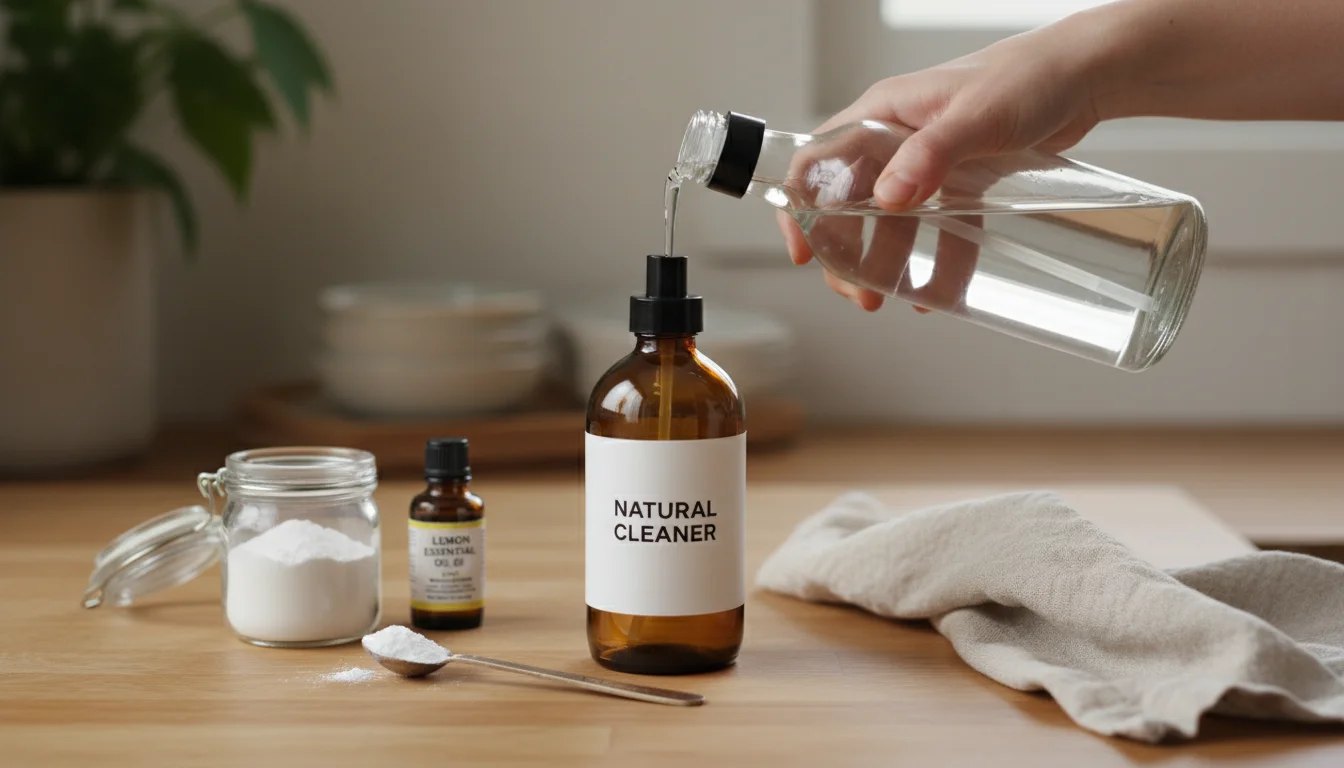
All-Purpose Cleaning Solutions: DIY Recipes
An all-purpose cleaner forms the backbone of your `natural cleaning products guide`. These recipes handle most routine cleaning tasks efficiently.
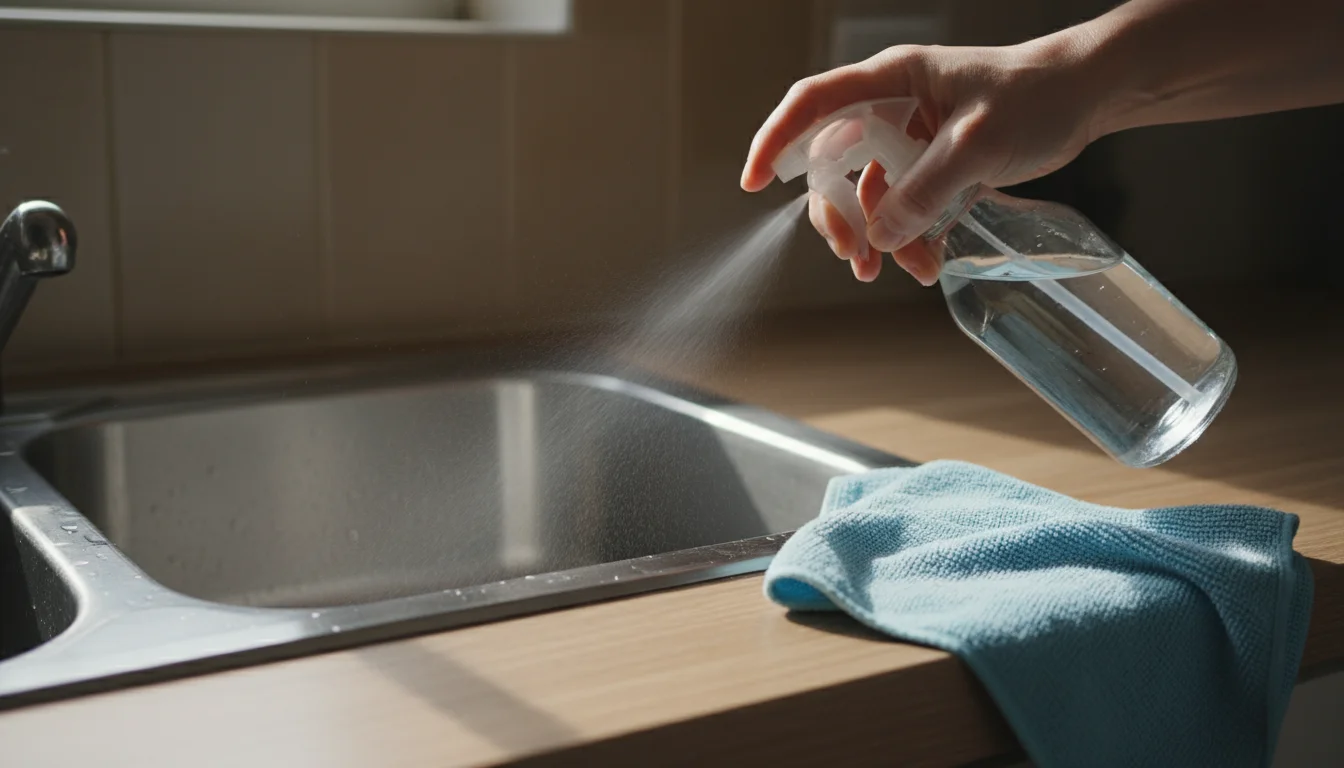
All-Purpose Vinegar Spray
This versatile spray cleans countertops, sinks, appliances, and even windows. You will find it indispensable for daily wipe-downs.
- Ingredients:
- 1 part white vinegar
- 1 part water
- 10-15 drops essential oil (e.g., lemon, tea tree, or lavender, optional)
- Instructions:
- Combine vinegar and water in a clean spray bottle.
- Add essential oils if desired. Essential oils, particularly tea tree, can enhance antibacterial action and mask the vinegar scent.
- Shake gently before each use.
- How to Use:
- Spray directly onto surfaces and wipe clean with a microfiber cloth.
- Avoid using this solution on natural stone surfaces like granite or marble, as vinegar’s acidity can etch them.
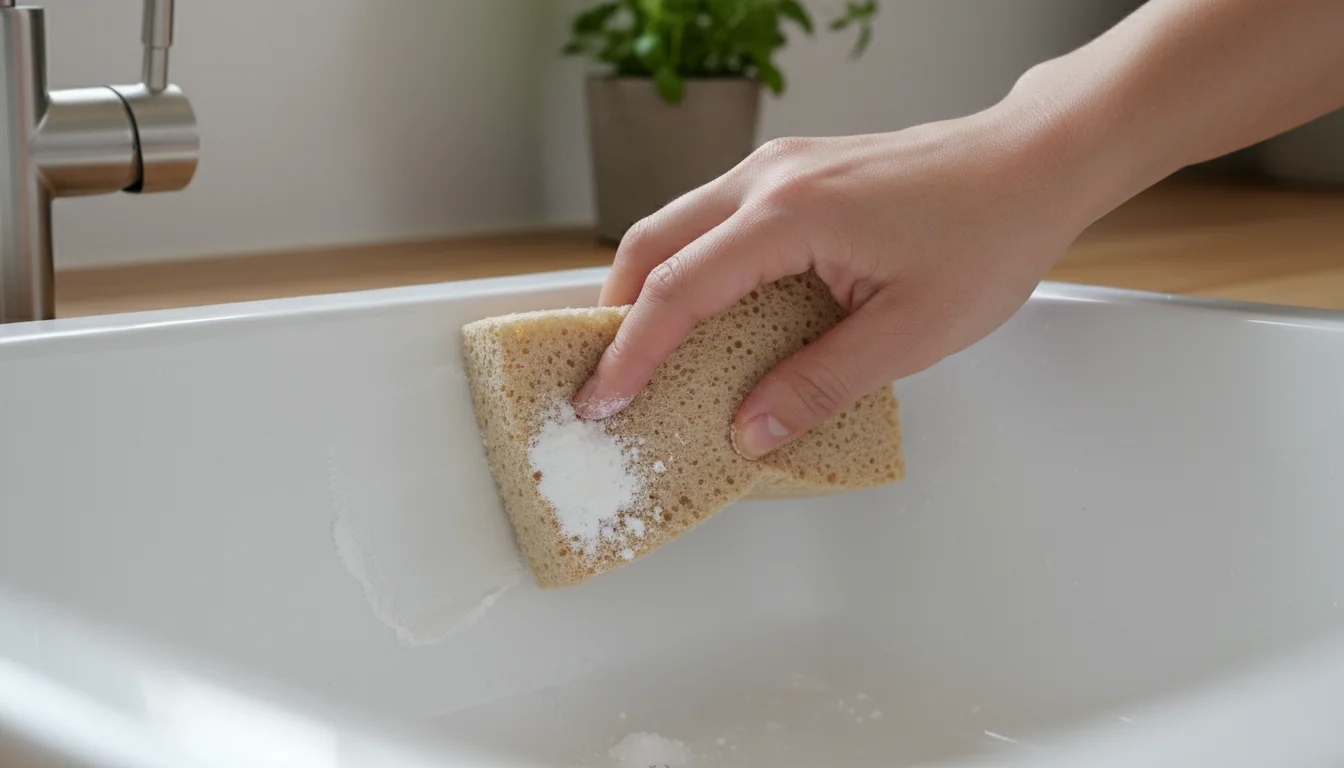
Baking Soda Soft Scrubber
For tougher grime and stains, a baking soda scrub provides abrasive power without scratching surfaces. This is one of the most effective `baking soda uses` for focused cleaning.
- Ingredients:
- 1/2 cup baking soda
- 2 tablespoons liquid castile soap
- Optional: 5-10 drops essential oil for scent
- Instructions:
- In a small bowl, mix baking soda and castile soap until a paste forms. Adjust consistency by adding more baking soda or soap.
- Add essential oil and stir well.
- How to Use:
- Apply the paste to a damp sponge or cloth.
- Scrub the soiled surface gently.
- Rinse thoroughly with water and wipe dry.
- Use this scrub on sinks, tubs, tiles, and even stubborn pot stains.

Kitchen Cleaning Powerhouses: Natural Methods
The kitchen, a hub of daily activity, often accumulates grease, food spills, and odors. These `cleaning tips` leverage `natural cleaning products guide` staples to keep your kitchen spotless.
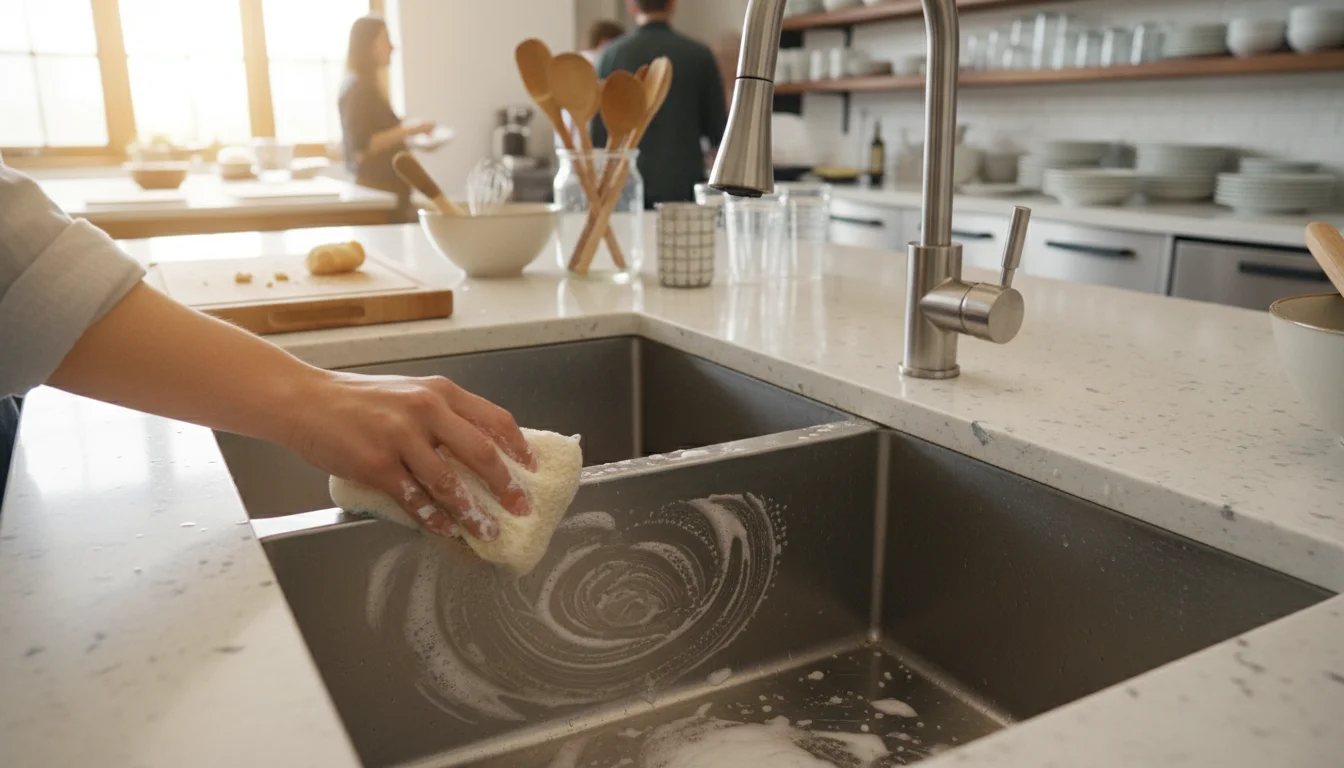
Countertops and Sink
Daily cleaning keeps your kitchen hygienic and fresh.
- For most countertops (laminate, quartz, tile): Use the All-Purpose Vinegar Spray. Spray and wipe with a clean cloth.
- For natural stone (granite, marble): Mix warm water with a few drops of liquid castile soap. Spray or wipe with a cloth, then rinse and dry to prevent water spots.
- For stainless steel sinks: Sprinkle baking soda generously into the sink. Using a damp sponge, scrub in the direction of the grain. The `baking soda uses` here cut through grease and polish the surface. Rinse thoroughly for a sparkling finish.
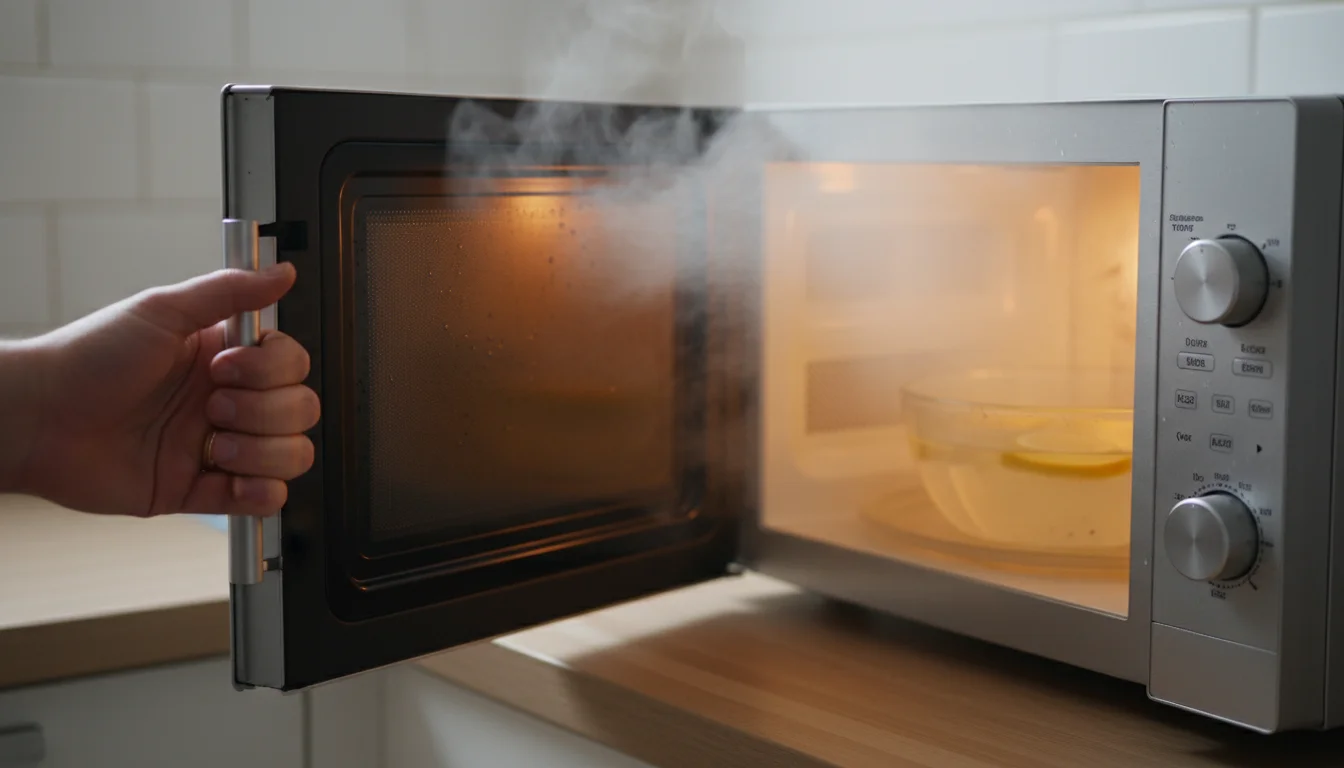
Microwave Refresh
Baked-on food splatters are no match for this simple `vinegar cleaning solutions` trick.
- Fill a microwave-safe bowl with 1 cup of water and 1/4 cup white vinegar.
- Place a few lemon slices in the bowl for added freshness.
- Microwave on high for 5 minutes, allowing the mixture to boil and steam up the interior.
- Carefully remove the hot bowl.
- Wipe down the inside of the microwave with a damp cloth. The steam loosens all the dried food, making removal effortless.

Oven Cleaning
Tackle oven grime naturally without harsh fumes.
- Remove oven racks.
- In a bowl, mix 1/2 cup baking soda with a few tablespoons of water to create a thick paste.
- Spread the paste over the oven interior, focusing on greasy spots. Avoid heating elements.
- Allow it to sit overnight (at least 12 hours). This gives the `baking soda uses` time to break down the grime.
- The next day, use a damp cloth and a spatula (if needed) to scrape away the paste and loosened grime.
- Spray any remaining residue with white vinegar. This reacts with the baking soda to create a fizzing action, further loosening debris.
- Wipe clean with a damp cloth, rinsing it frequently.
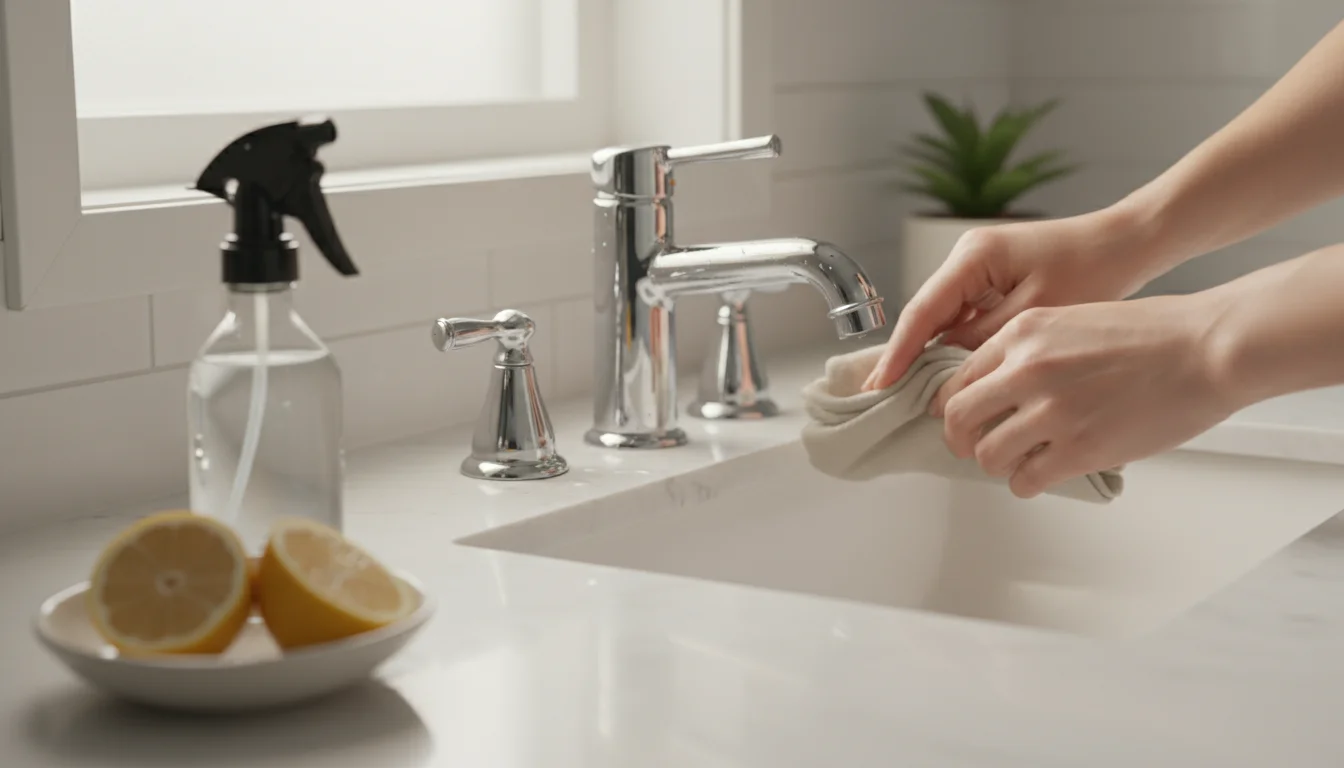
Bathroom Brilliance: Eco-Friendly Cleaners
Bathrooms require effective sanitization. These `eco-friendly cleaners` ensure a clean, germ-free space.

Toilet Bowl Cleaner
Keep your toilet sparkling without harsh chemicals.
- Pour 1/2 cup baking soda into the toilet bowl. Let it sit for 15-30 minutes. The `baking soda uses` here help deodorize and loosen stains.
- Add 1 cup white vinegar. The fizzing reaction between the baking soda and vinegar aids in scrubbing.
- Let it sit for another 15-30 minutes.
- Scrub with a toilet brush, focusing on the waterline and under the rim.
- Flush.
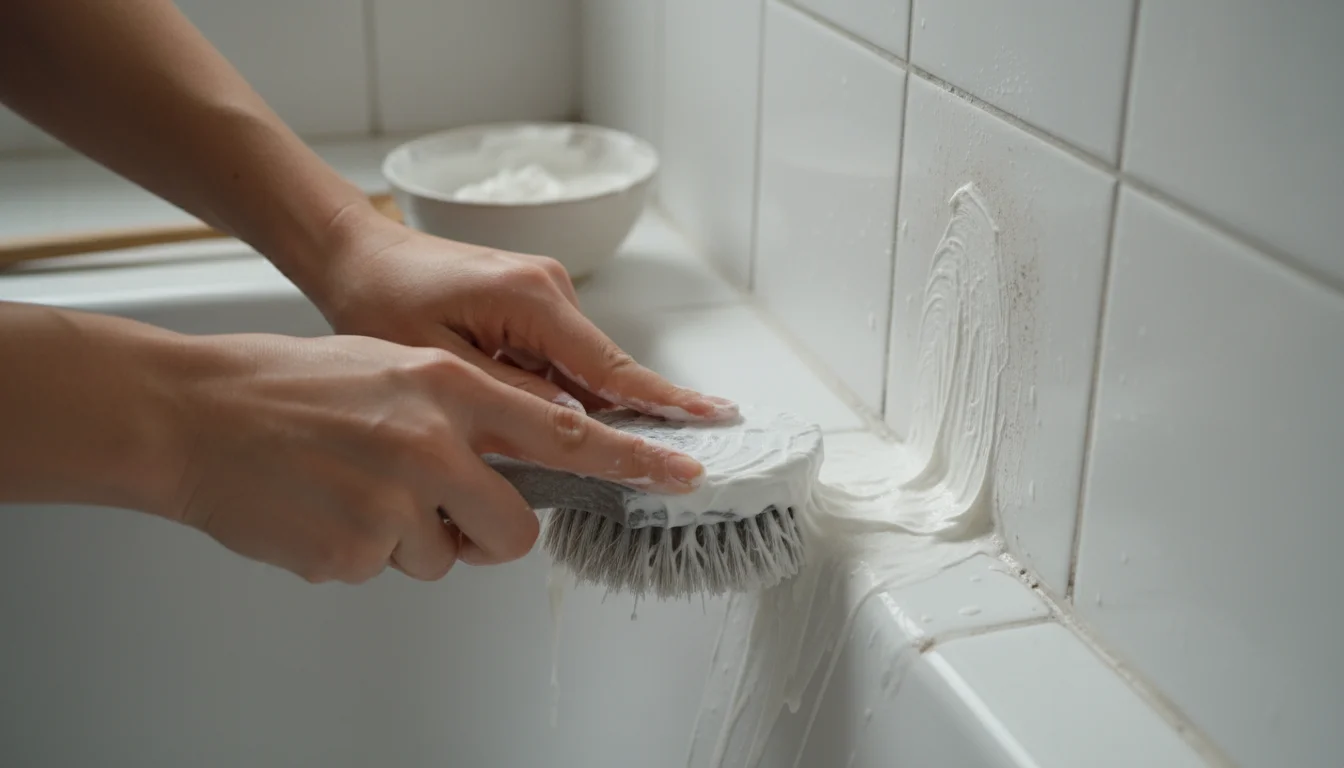
Shower and Tub Scrub
Eliminate soap scum and mildew with this powerful paste.
- Mix 1 cup baking soda with 1/4 cup liquid castile soap to form a thick paste. Add 10-15 drops of tea tree essential oil for its antimicrobial properties.
- Apply the paste to wet shower walls, tub, and grout lines using a sponge or brush.
- Let it sit for 20-30 minutes.
- Scrub thoroughly, paying attention to problem areas.
- Rinse completely with warm water.
- For tough mildew spots, spray with undiluted hydrogen peroxide, let it sit for 10 minutes, then rinse. Always test in an inconspicuous area first.

Mirror and Glass Cleaner
Achieve streak-free shine with a simple `vinegar cleaning solutions` recipe.
- Ingredients:
- 1/2 cup white vinegar
- 1/2 cup water
- Optional: 2-3 drops lemon essential oil for scent
- Instructions:
- Combine ingredients in a spray bottle.
- Shake gently before use.
- How to Use:
- Spray onto mirrors, windows, and glass surfaces.
- Wipe clean with a lint-free cloth or crumpled newspaper for a streak-free finish.
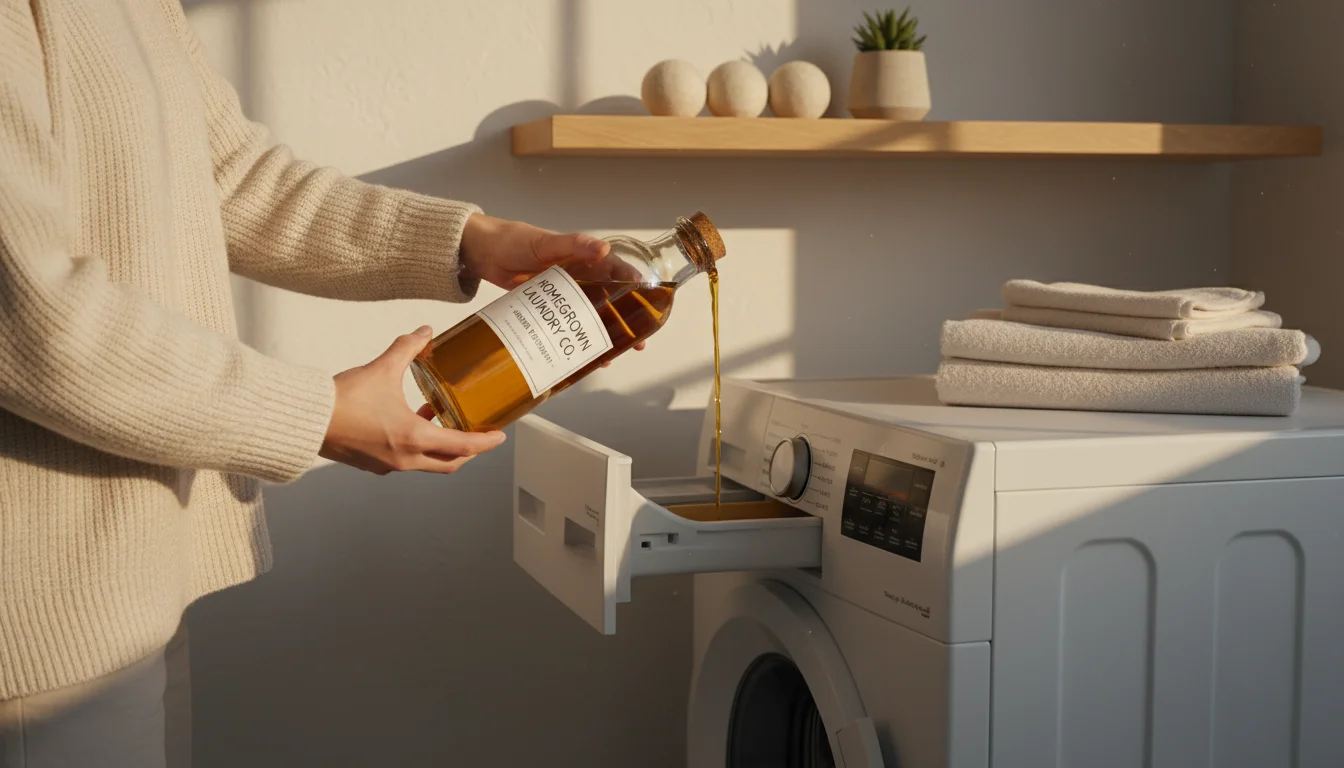
Laundry Room Refreshers: Natural Alternatives
Your `natural cleaning products guide` extends to the laundry room, offering effective `eco-friendly cleaners` for fresh, clean clothes.
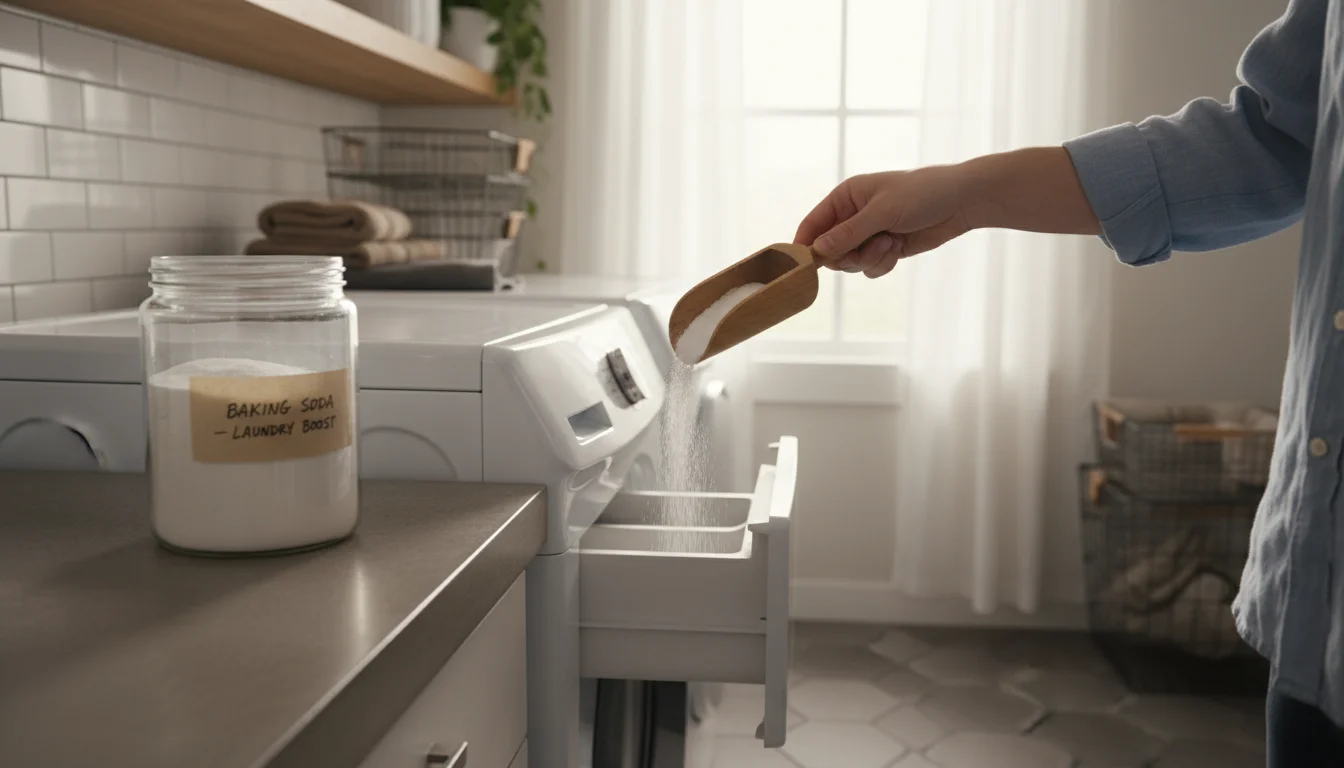
Natural Laundry Booster and Deodorizer
Boost your detergent’s power and eliminate odors.
Add 1/2 cup baking soda to each load of laundry along with your regular detergent. The `baking soda uses` here include softening water, boosting cleaning power, and neutralizing odors, leaving clothes fresher. For stubborn odors, pre-soak items in a solution of 1 cup baking soda per gallon of water for a few hours before washing.
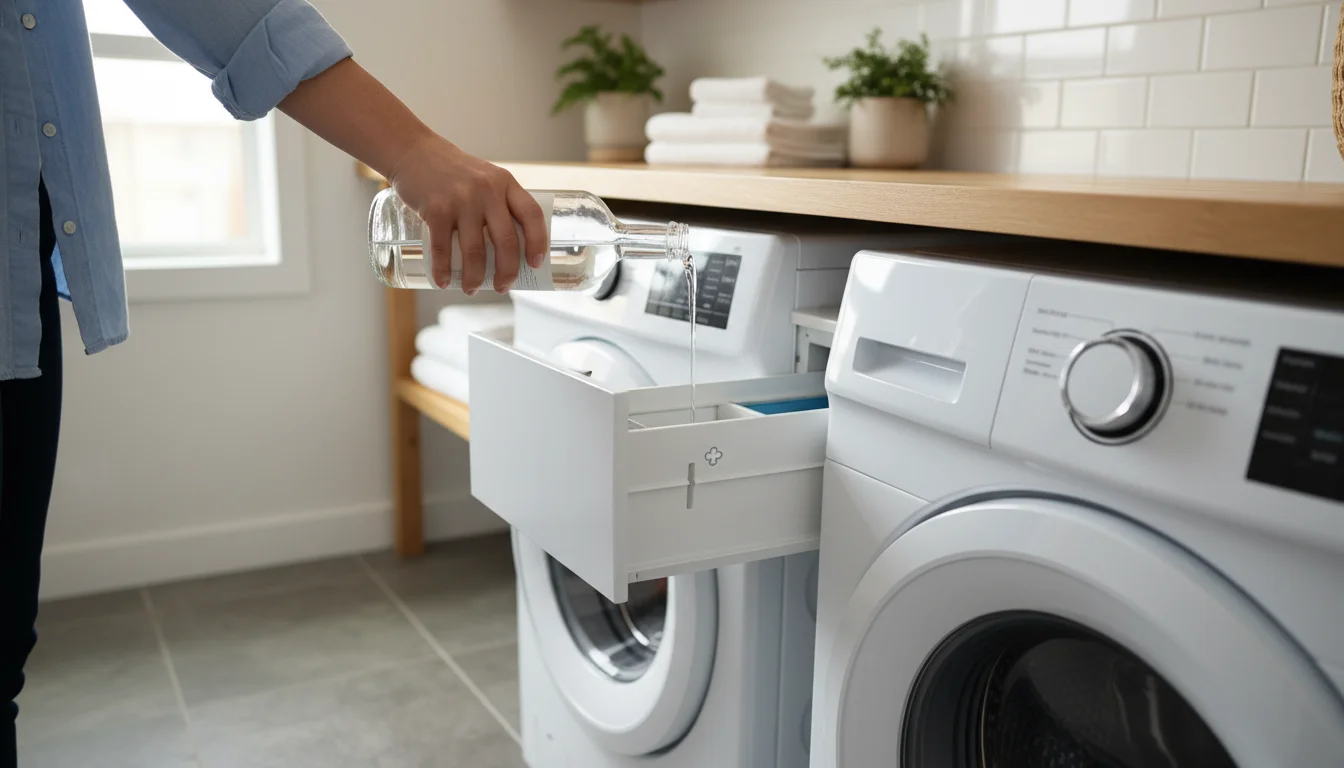
DIY Fabric Softener
Achieve soft clothes without commercial softeners that can contain irritating fragrances.
Pour 1/2 cup white vinegar into the fabric softener dispenser of your washing machine during the rinse cycle. Do not worry; your clothes will not smell like vinegar. The vinegar helps to break down detergent residue, soften fabrics, and prevent static cling. This is a classic `vinegar cleaning solutions` application for laundry.
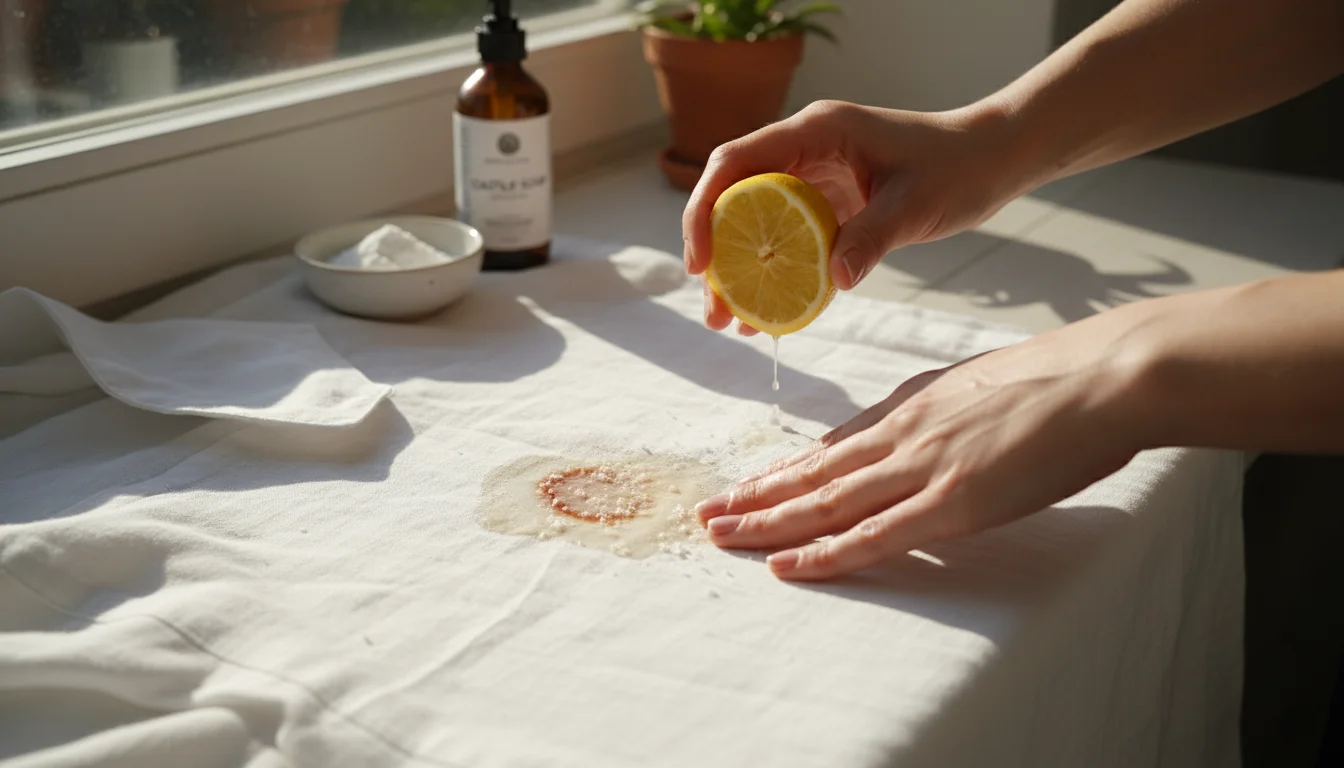
Stain Pre-Treatment
Tackle common stains naturally.
- For grease stains: Apply a generous amount of liquid castile soap directly to the stain. Rub gently and let it sit for 10-15 minutes before washing.
- For general stains: Mix baking soda with a small amount of water to form a paste. Apply the paste to the stain, gently rub it in, and let it sit for 30 minutes before washing.
- For white fabrics: A mixture of lemon juice and salt can act as a natural whitener and stain remover. Apply to the stain, let it sit in the sun for an hour, then wash. Always test on a small, inconspicuous area first.
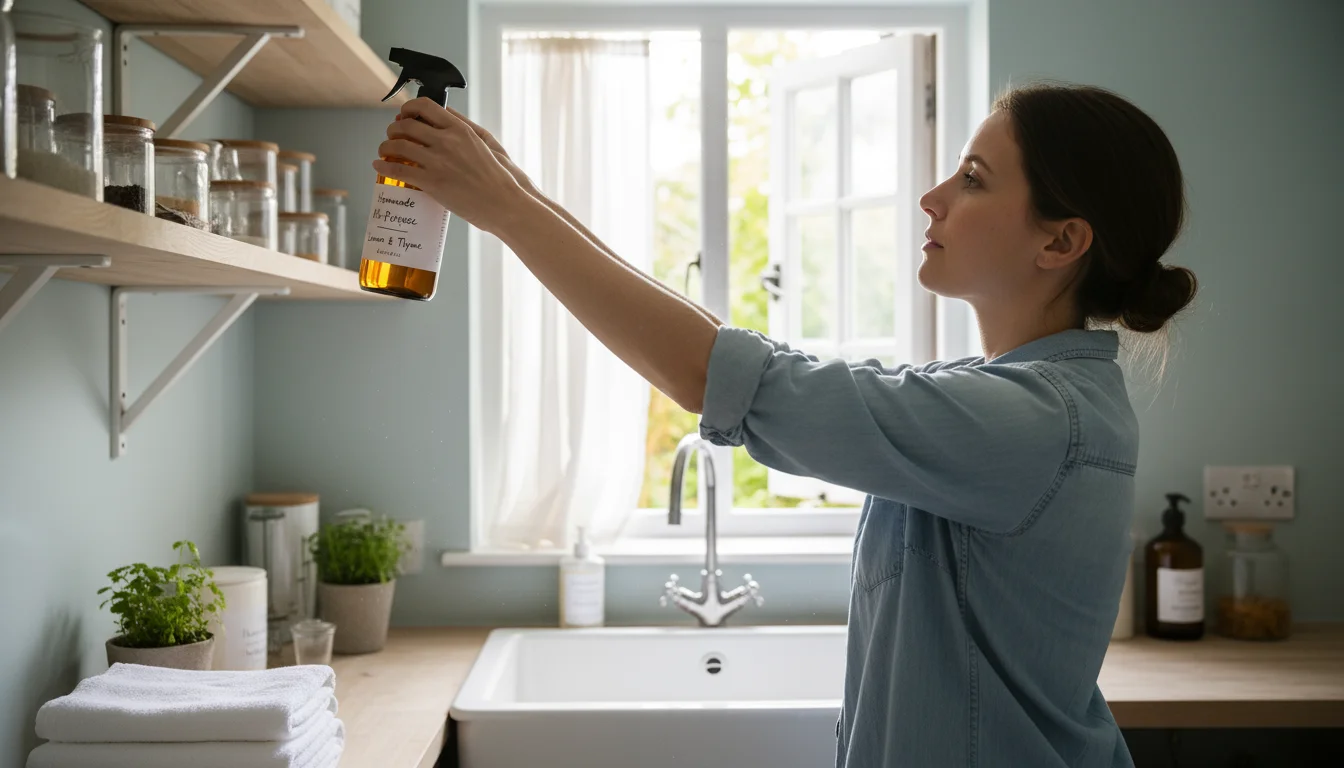
Safety First: Best Practices for Natural Cleaning
Even with natural ingredients, responsible use ensures safety and efficacy. Following these `cleaning tips` protects you and your home.
- Ventilation is Key: Always ensure good ventilation when cleaning, even with natural products. Open windows or use fans to circulate fresh air. This helps dissipate any lingering odors and maintains good indoor air quality.
- Proper Storage: Store your DIY cleaning solutions in clearly labeled, dark, airtight containers, away from direct sunlight and out of reach of children and pets. Recycled spray bottles work well, but always label them accurately to prevent confusion.
- Never Mix Ammonia and Bleach: While not typically part of natural cleaning, understand that mixing ammonia (found in some conventional cleaners) and bleach creates toxic chlorine gas. Also, avoid mixing vinegar with hydrogen peroxide in the same bottle, as this can form peracetic acid, which is corrosive. Use them separately and rinse surfaces between applications.
- Patch Test Surfaces: Before applying any new cleaning solution to a large area, especially on delicate or expensive surfaces, perform a patch test in an inconspicuous spot. This prevents potential discoloration or damage. This is particularly important for natural stone or painted surfaces.
- Dilute Essential Oils: Essential oils are highly concentrated. Always dilute them in a carrier liquid (like water or castile soap) before use. Avoid direct skin contact with undiluted oils, and use them sparingly around pets, children, and pregnant individuals.
- Use Fresh Solutions: Natural cleaners, especially those with water, can develop bacteria over time. Aim to use your DIY solutions within a few weeks, or discard and make a fresh batch. Vinegar and baking soda solutions generally have a longer shelf life, but fresh is always best.
For more insights on maintaining healthy indoor environments, you can consult resources like the EPA’s indoor air quality guide, which offers extensive information on reducing airborne pollutants.
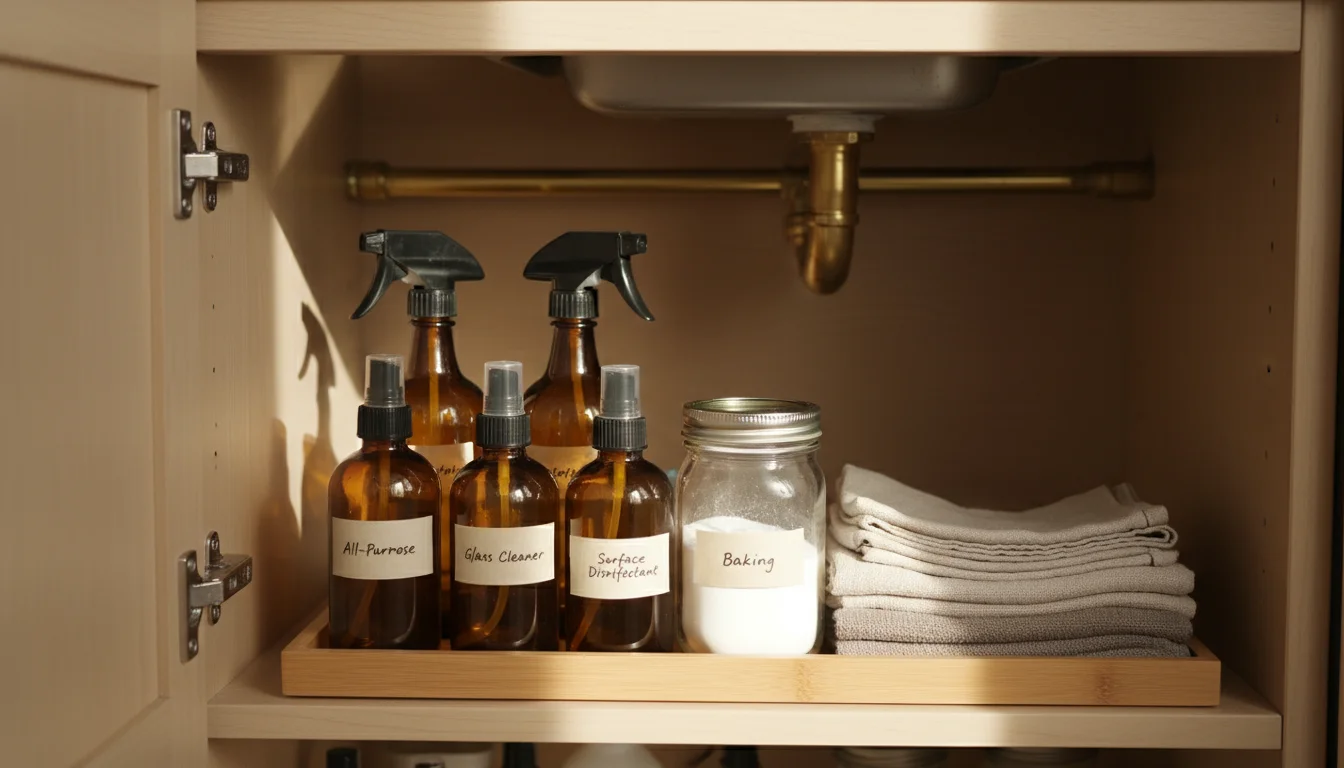
Maintaining Your Natural Cleaning Routine
Consistency proves crucial for a naturally clean home. You do not need to dedicate entire days to cleaning; instead, integrate small, manageable tasks into your daily and weekly routines. This approach prevents build-up, making overall cleaning easier and less daunting.
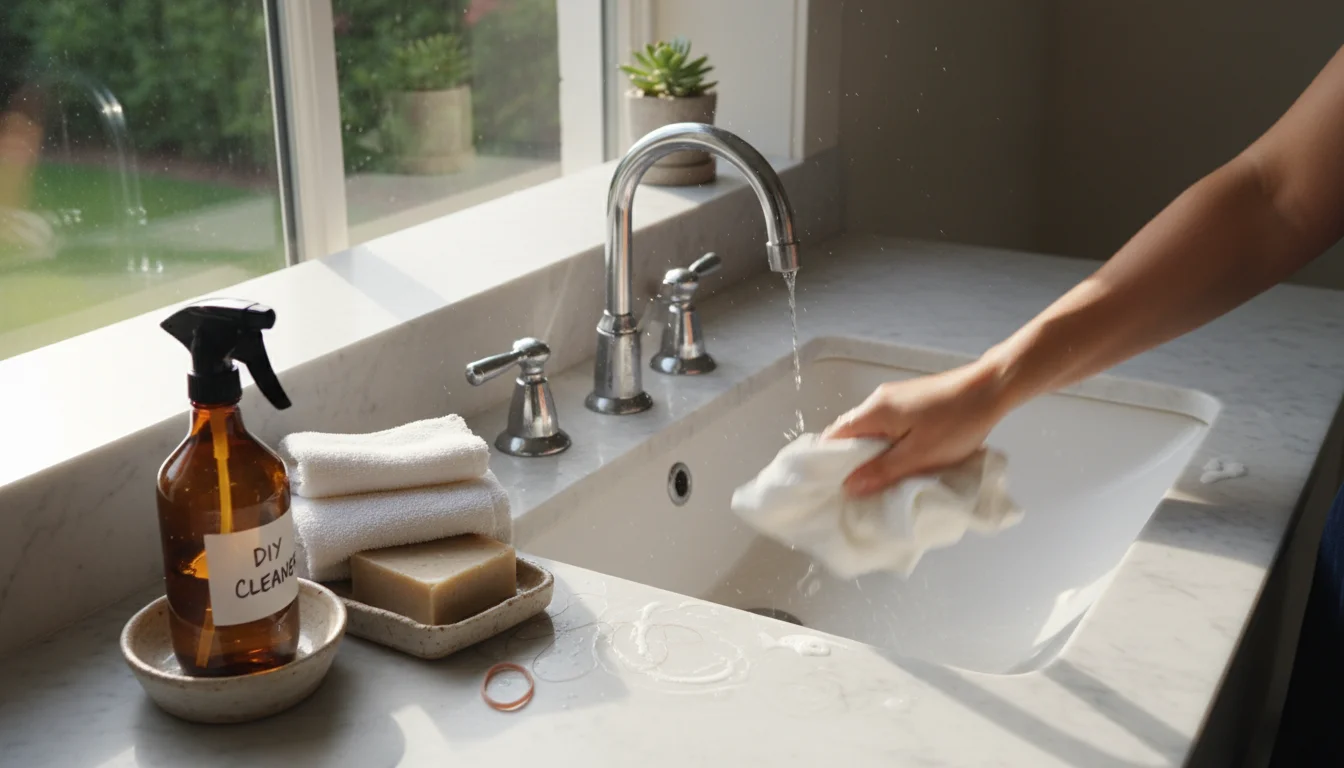
Daily Habits for a Tidy Home
- Wipe Down Surfaces Daily: After meals, quickly wipe down kitchen counters and your sink using your All-Purpose Vinegar Spray. This prevents food residue from hardening.
- Quick Bathroom Reset: After your morning routine, give your bathroom sink and toilet seat a swift wipe. This takes less than a minute but makes a significant difference.
- Address Spills Immediately: Natural cleaners work best on fresh spills. Grab a cloth and your appropriate DIY cleaner as soon as accidents happen.

Weekly Cleaning Flow
Dedicate specific times each week to deeper cleaning in different zones (designated areas for specific activities). This strategy ensures every area receives attention without overwhelming you.
- Kitchen Deep Clean: Use your baking soda scrub for the sink and countertops. Address the microwave and oven as needed.
- Bathroom Blitz: Clean the toilet, shower, tub, and mirrors with the respective natural solutions.
- Floor Care: Sweep or vacuum, then mop with a simple solution of warm water and a few drops of liquid castile soap. For tough spots, a `vinegar cleaning solutions` application can help.
- Dusting: Use a damp cloth to dust surfaces. For wood, a mixture of olive oil and lemon juice polishes naturally.
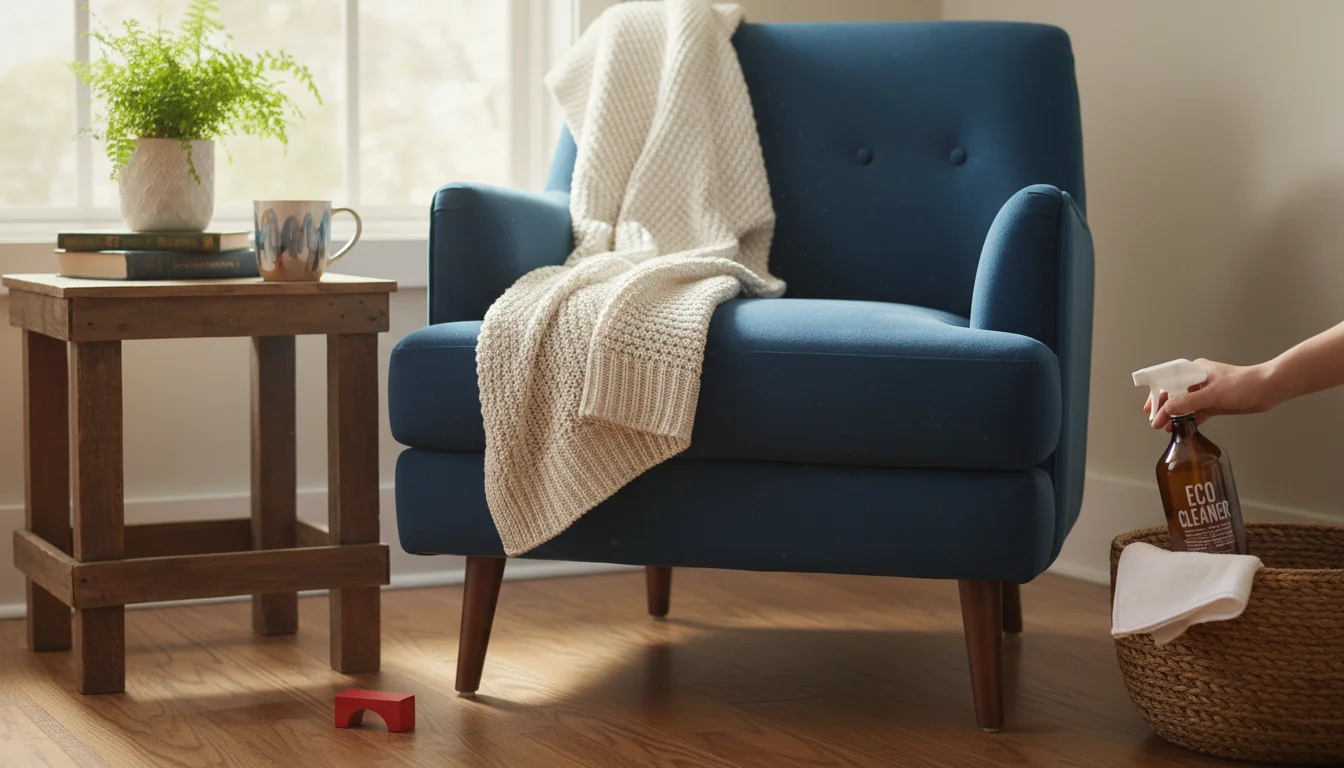
Embrace Realistic Expectations
Your goal is a clean, comfortable home, not a showroom. Life happens, and sometimes things get messy. Do not let perfection be the enemy of progress. Focus on maintaining basic hygiene and order with your `eco-friendly cleaners`. You will find that these simple `cleaning tips` create a more serene and enjoyable living space without the stress of constant deep cleaning.
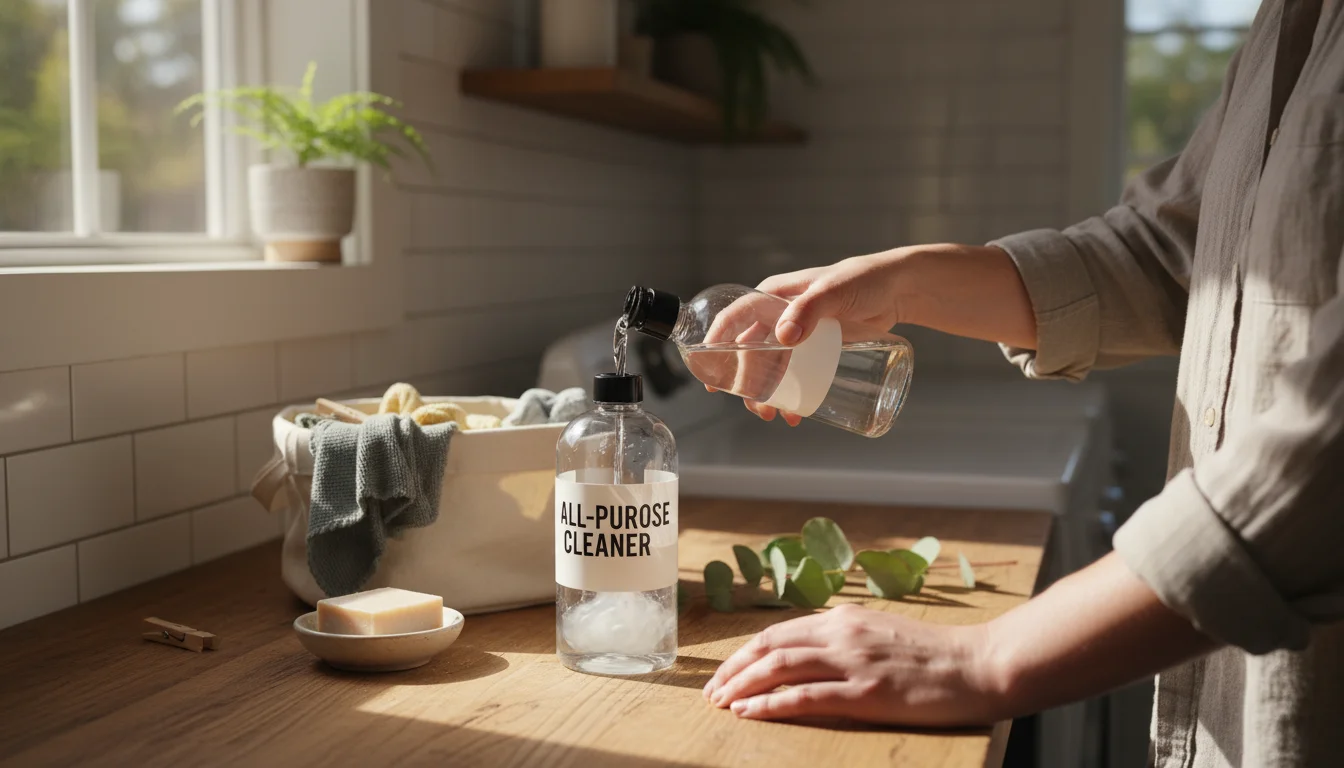
Frequently Asked Questions
Can natural cleaners disinfect as effectively as chemical ones?
Yes, many natural ingredients possess strong disinfectant properties. White vinegar, hydrogen peroxide, and tea tree essential oil all kill a wide range of bacteria, viruses, and molds. For example, 3% hydrogen peroxide is an effective disinfectant for many surfaces. For optimal effectiveness, allow these solutions to sit on surfaces for several minutes before wiping, giving them time to work.
Are essential oils necessary for natural cleaning?
Essential oils are not strictly necessary for effective cleaning. Ingredients like vinegar, baking soda, and castile soap perform the primary cleaning functions. Essential oils primarily add pleasant scents, helping to mask the natural aroma of vinegar, and some offer additional antimicrobial benefits. You can achieve excellent results without them, especially if you have sensitivities or prefer unscented products.
How long do DIY natural cleaning solutions last?
The shelf life of DIY cleaning solutions varies depending on the ingredients. Solutions containing mostly white vinegar and water tend to last several months. However, solutions with water and liquid castile soap or those containing fresh ingredients like lemon juice have a shorter shelf life, typically a few weeks. Mold and bacteria can grow in water-based solutions over time. For best results and safety, prepare smaller batches more frequently and store them in a cool, dark place. Discard any solution that shows signs of cloudiness or an unusual odor.
Can I use natural cleaners on all surfaces?
While versatile, natural cleaners have some limitations. Avoid using vinegar on natural stone surfaces like granite, marble, or travertine, as its acidity can etch the stone over time, dulling its finish. For these surfaces, a mild solution of water and castile soap is safer. Always perform a patch test on an inconspicuous area of any new surface before applying a cleaning solution widely to ensure compatibility and prevent damage.
What if I do not have time to make my own solutions?
Even busy schedules can accommodate a natural approach. Many excellent pre-made `eco-friendly cleaners` are available on the market today. Look for brands that list their ingredients clearly, use plant-based components, and avoid harsh chemicals. These products offer a convenient bridge between DIY and conventional cleaners, providing effective and safer options when your time is limited. Incorporating simple `cleaning tips` such as quick daily wipes with a store-bought natural spray also helps maintain cleanliness.
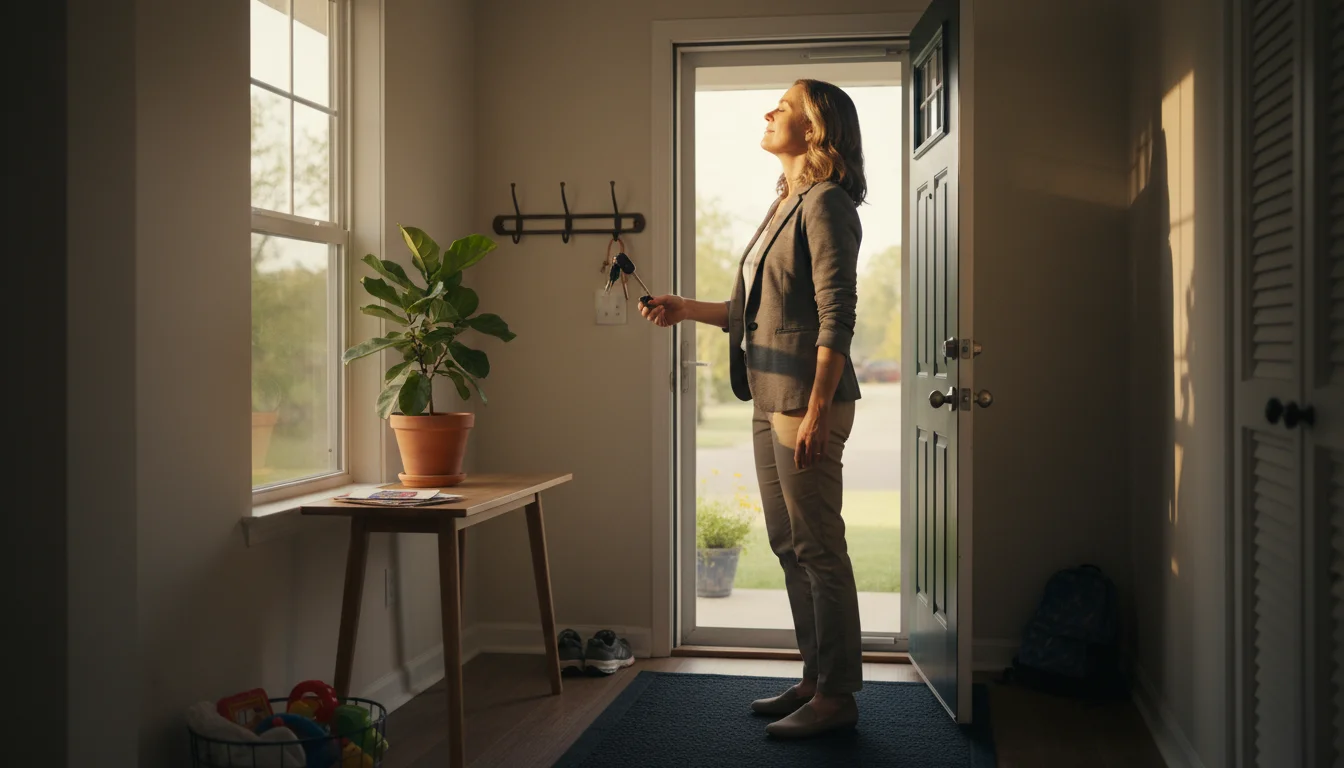
Leave a Reply